Back in August, we made our official forecast for when the current Delta wave of COVID-19 will peak in the United States. Since we are now past the window in which we forecast the peak to occur, a lot of you are wondering if the current delta wave has actually reached its peak. Before diving into the data, recall the 20 August forecast we made for the delta wave peak.
| Parameter | Forecast Value |
|---|---|
| Peak will Occur Between | 5 to 15 September, 2021 |
| Number of New Daily Cases at Peak | 200,000 to 250,000 |
| Cumulative Cases at the Peak | 41 to 43 million |
| Cumulative Cases Post-Wave | 48 to 51 million |
So has the Delta wave peaked? Because the United States is so big and diverse, the best answer I can give you right now, unfortunately is “it’s complicated.” The good news is that things are looking better than they were just a month ago…depending on where you are.
Current Overview
The COVID-19 Delta Variant continues to absolutely rip through states with low vaccination rates. The summer surge that originally started in Missouri and Arkansas quickly spread across Louisiana, Texas, Mississippi, Alabama, Georgia, and Florida. That epicenter has now starting to drift north into the Tennessee and Ohio Valleys.
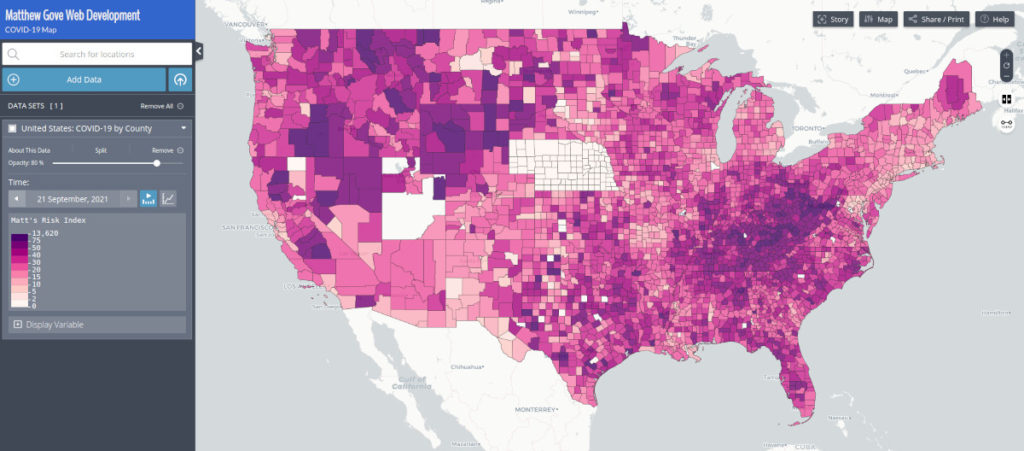
Thankfully, case loads are starting to come down in some areas. However, case loads continue to rise across far too much of the country. We’ve still got a long ways to go before the pandemic is over.
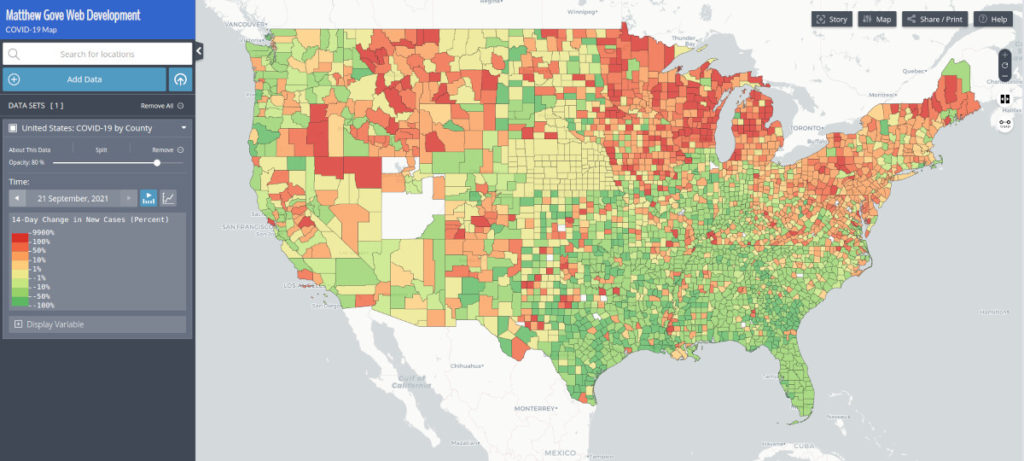
The Summer Delta Wave has Peaked in the Southeast, but the Wave is Far From Over
After the relentless surge this summer, the delta wave has peaked in the southeast. New daily case counts across the majority of counties in Arkansas, Mississippi, Georgia, and Florida are now falling.

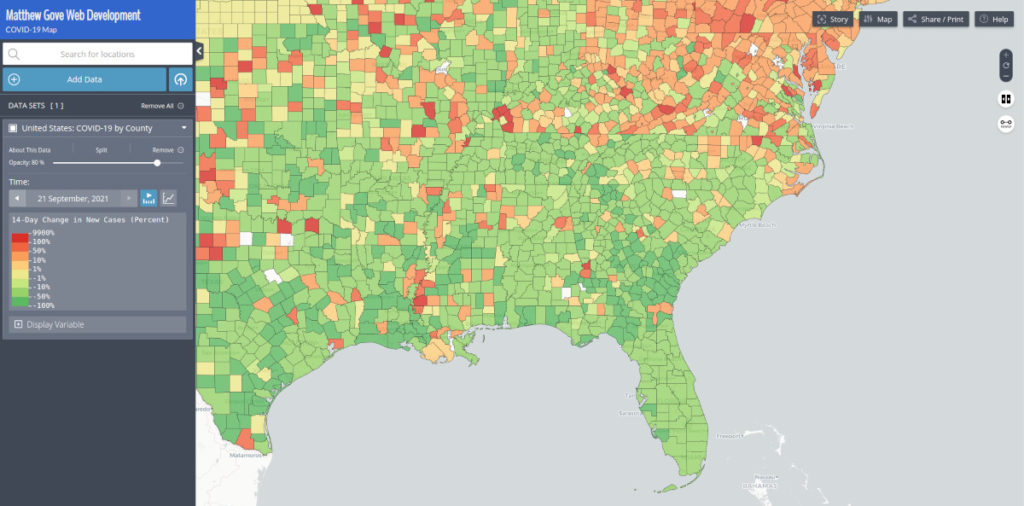
Unfortunately, this map gives me cause for concern. Even though I am cautiously optimistic the surge has peaked, plenty of red flags remain. An alarming number of counties are still showing an increase in cases over the past two weeks. This spread is still raging in Texas, Oklahoma, Louisiana, Alabama, Tennessee, and the Carolinas. These areas still have the lowest vaccination rates in the country. Therefore, there remains plenty of vulnerable population still left for the COVID-19 Delta Variant to infect.
It’s a cruel reminder of just how vicious the Delta Variant is, and that a decline in cases can turn around and start surging again anytime. Both the Delta wave and the COVID-19 pandemic are far from over.
The Delta Wave is Rapidly Spreading North and West
The southeast’s epicenter has spread north. Kentucky, Tennessee, and West Virginia are all on fire right now. Same with the southern parts of Ohio, Indiana and Illinois. Further west, Wyoming, Idaho, and the eastern parts of Washington and Oregon are experiencing rapid COVID-19 spread and extreme risk levels on Matt’s Risk Index.
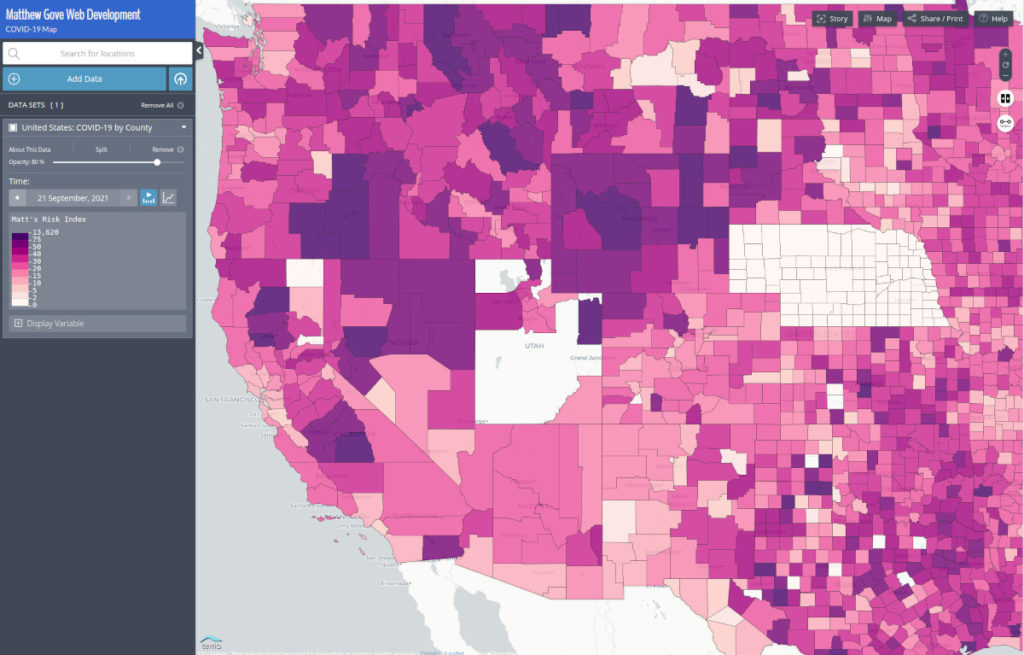
Interestingly, the western epicenter is getting slammed on both sides. A cluster of Delta cases that started in northern California and southwest Oregon has been swiftly sweeping in from the southwest. On the other side, the Sturgis Motorcycle Rally seeded another superspreader cluster of the Delta Variant. That outbreak has been pushing into the same region from the east. That cluster has also rapidly spread south. It merged with the remains of the Missouri and Arkansas cluster from earlier in the summer. It has since spread across Kansas, Oklahoma, and Texas.
Finally, don’t forget about our friends in Alaska and Hawaii. The COVID-19 Delta Variant has been ravaging both states, with both cases and hospitalizations at all-time pandemic highs. While new daily cases appear to have peaked in Hawaii on 2 September, they are still rapidly rising in Alaska. Again, remember to take these statistics with caution. New case counts can quickly turn around and start rising again without warning.
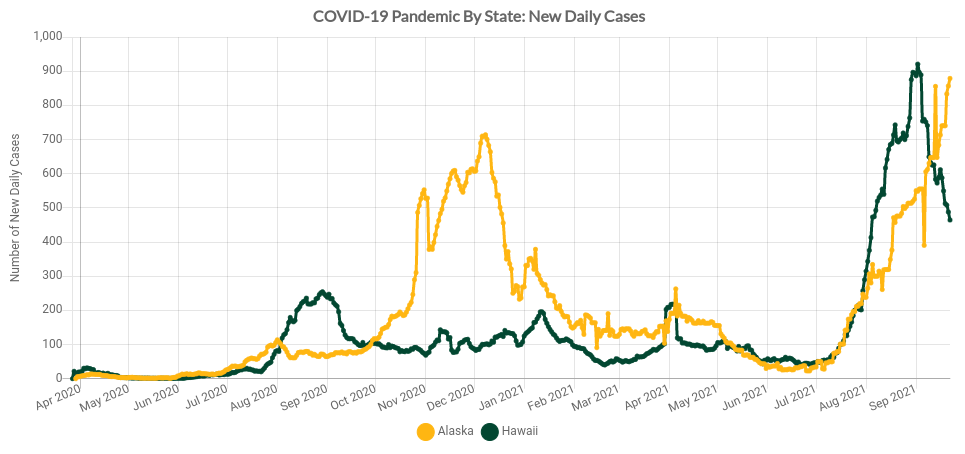
If You’re In the Northeast, Don’t Rest on Your Laurels. The Delta Wave is Still Coming. It Just Won’t Be as Bad.
It’s easy to look at the lower COVID-19 case rates in the northeast and attribute it to the region’s high vaccination rate. Indeed, you should. A 60 to 70 percent vaccination rate is responsible for the northeast largely avoiding the ongoing Delta Wave.
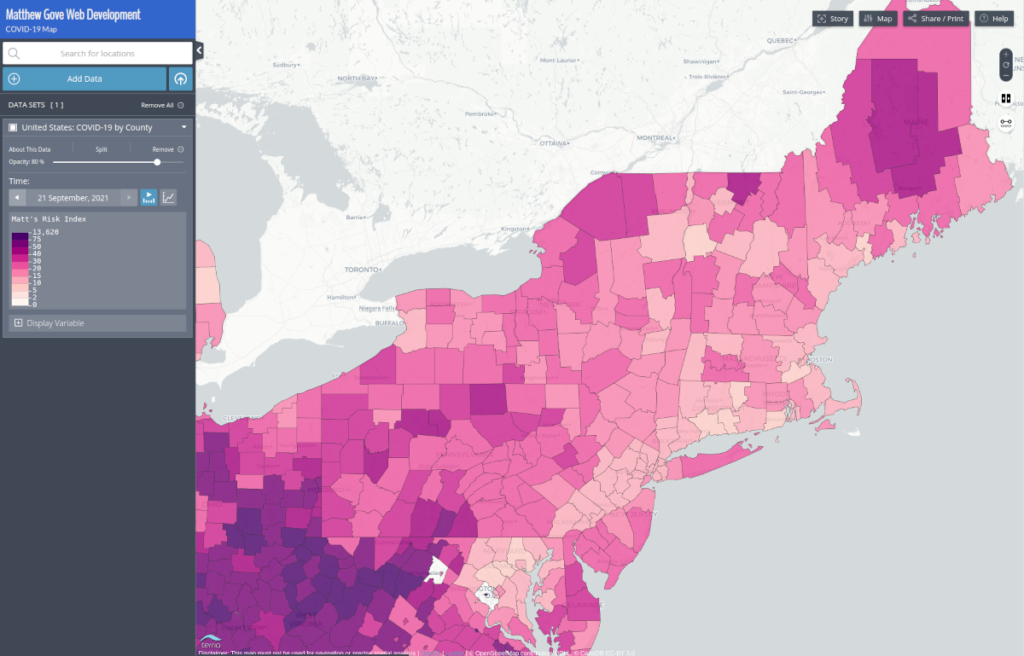
However, there is still one big wild card in the northeast. It’s still far too early to establish the effect reopening schools has had on the ongoing Delta wave. Most schools in the northeast do not start until after Labor Day. As a result, their first day of school would have fallen during the week of 6 September this year.
Keep in mind that many K-12 students are not yet eligible for COVID-19 vaccines. Since it takes 10 to 14 days for COVID-19 transmission to show up in test results, we will not know the full effect of getting back in the classroom in the northeast for at least a couple more weeks. Additionally, cases are expected to increase as colder weather drives people back indoors as we go throughout the fall.
Thankfully, the northeast has the highest vaccination rate in the country. Any additional surge from the current Delta wave should be mild and peak quickly compared to the rest of the country. Yes, COVID-19 is absolutely ripping through schools in certain parts of the United States. However, unvaccinated adults remain the primary spreaders of the current Delta surge.
Once Again, Look to Australia for an Ominous Warning for the Winter
Australia’s location in the Southern Hemisphere has now twice given Northern Hemisphere countries a sneak preview of what could be in store for their winter. Indeed, Australia’s 2020 winter surge began in late June in the State of Victoria. That surge sent Melbourne into lockdown until the wave finally subsided in late September. The United States ignored that stark warning. The result was predictable: a relentless seven-month surge that peaked at nearly 300,000 cases per day.
Those same warning signs are now flashing once again. The Delta Variant has shattered COVID-19 records across Australia as winter now mercifully turns into spring down under. This year, Australia’s winter wave began around 10 July. It has since surged to more than four times the 2020 peak, thanks to the Delta Variant. As a result, Prime Minister Scott Morrison recently announced that Australia will shift from its zero-COVID strategy. Instead, it will learn to live with the virus as vaccinations ramp up over the next few months. If its current vaccination rate holds, Australia will vaccinate 70% of its eligible population by mid-October.

Winter Outlook for the United States
So what does this mean for the United States? At the very least, it all but guarantees a fifth wave as people gather indoors this fall and travel for the holidays. Will it be worse than last winter? We don’t know yet. It all boils down to the tug-of-war between the vaccines and the highly contagious Delta Variant. Whichever one wins will drive the course of the fifth wave. About 55% of the US population is fully vaccinated. At this point, it’s really a flip of a coin as to which way it goes.
One important thing to note is that the US is currently more vaccinated (55%) than Australia was (36%) heading into its winter back in April and May. However, Americans have a much higher resistance to COVID-19 restrictions and vaccines than Australia does, which will likely nullify that advantage.
Conclusion
I’m cautiously optimistic that, with a few exceptions, the Delta wave has reached its peak in the United States. However, it opens up a bigger question. How quickly will the case counts drop before the inevitable fifth wave sets in? And what happens once that fifth wave sets in? Only time will tell. But I’ll leave you with this. Have a look at the near perfect inverse relationship between vaccination rates and Matt’s Risk Index.


Many infectious disease experts said that the Delta Variant would set the end date of the pandemic back one year. Hopefully through vaccinations and infections, we can start approaching herd immunity be the Spring of 2022. In the meantime, there are a few promising signs. First, there are a growing number of countries that have had a major Delta Wave. Many of those countries have kept case loads down following those waves.
Second, for as contagious and nasty as the Delta Variant is, that may actually be working for us. Further variants have not been able to rapidly spread because Delta is so dominant. That doesn’t necessarily mean they can’t but if Delta remains dominant, it should be easier for us to corral it. The United States can still avoid the misery and disaster of last winter. But that window to avoid it is rapidly closing on us. Let’s all do our part to put this nightmare behind us once and for all.
Top Photo: Red Rock Backcountry
Kaibab National Forest, Arizona – July, 2016